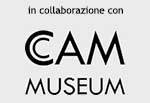The disorientation of the senses in the electronic arts
The advent of the electronic age has also affected the arts world, sometimes with unpredictable outcomes, and often not fully investigated. The introduction of digital tools, in fact, do not simply reflect on the techniques of production or on the average of distrubution, but to some extent has intervened resulting in more profound changes, which concern the very nature of the artwork.
In particular, there are artistic fields in which this transformation has been particularly hard-hitting, coming to affect the perception of the artwork itself, such as certain forms of acousmatic music and videoart.
The nodes of intersection between acousmatic music and videoart are varied, and essentially relate to the conceptual and language framework.
Conceptually, the acousmatic music born from the sound recording, and/or from the subsequent processing of these through a phase of electronic post-production. It is the experimental aspect of this process (the famous concrete case in which the composition is based on listening direct result, in a constant go/back from doing listening activities, starting with sounds created or acquired and processed) connected to handling of raw sounds, already found, that drove Pierre Schaeffer coined the term musique concrète. A term that refers explicitly to that of abstract instrumental music, which is conceived around a table in a theoretical way (beyond any direct contact with the material and whose concept goes for the abstraction of a codification of a language: the solfeggio).
Similarly, videoart was born from the recording of images, and the subsequent transformation of the same through a phase of electronic post-production when they are not directly generated electronically (computer graphic). The assembly phase of the shot is critical, as and more than that of the recording. And even if, upstream, there may be already — in the mind of video artist — a storyboard, an idea of what will be the final product, the exercise of the assembly itself is being test phase; as for the drafting of a text, where although it defaults to the concept you want to express, the form was born in the course of work, and transforms and refines also in relation to other parts of the text.
It is interesting to note here also the effect of another factor, known as remoteness, or the cognitive distance that separates the primary origin of the works from the moment of its use, and how this has an impact on the perception of the listener/spectator.
In the case of a normal piece of music, such as Merry Christmas Mr. Lawrence performed on piano by its author Ryuichi Sakamoto, we have basically 4 steps: playing a song by the musician, his recording, post-production, the listening from a CD. Compared to the perception of those who have directly assisted execution, the remoteness factor is obviously higher, but even ignoring is the song that the style of the author, who listen to the music being played from the CD will be perfectly able to recognize that it is a piano performance. While not having direct vision, the listener recognizes the sound as produced by this instrument. Equally, think for example to a video-clip. There are actors who perform a choreography on the set or follow a storyboard, there is a video recording, an assembly step, so that someone will see the video on TV.
Here too, the remoteness does not interfere with the cognitive perception.
However, if we think about the same operation, with the acousmatic music on origin, things change. In this case, the fact that the sounds are not produced by musical instruments, but taken from reality and then processed electronically, puts the end user in a new condition, because he will not be able to recognize the sounds that islistening, nor to trace the line of remoteness; sounds do not reveal anything on the instrument that produced them, and since there is no musician who performs that song will never be possible to attend a live concert. The same occurs in the case of a work of videoart, in which the images are generated electronically, for example, and without recognizable form.
The sensory perception, in fact, is essentially an experiential question. Our ability to recognize and classify what comes to us through the senses, is the result of previous experience. We know that sound comes from a piano because we have experience (direct or indirect) of this.
And this is the reason that makes us unrecognizable abstract art.
The music and videoart also have another element in common that, in the light of this, it may in some cases increase the difficulty of recognition: the time factor.
Even linguistically, videoart and acousmatic music have points in common, since both the structure of the work is characterized by not-presence of a classical narrative form.
Regardless of the length, a work of video art is distinguished from the cinema to be essentially non-fiction; video art expresses, do not tell. And this regardless of the fact that its structure can have a story or not at the foundation. If the videoart is the signifier, the form, the meaning does not match (almost never) to a narrative — something to which, however, corresponds to the expectation of the public. Why in human culture visual art with a temporal dimension (theater, cinema, video art, …) is associated with the idea of storytelling.
Similarly, the acousmatic music is a signifier that does not match a meaning, recognizable as such by the public, because its linguistic structure (in this case made of harmonic and tonal variations) does not correspond to what the public perceives.
In both cases, we are therefore in the presence of a hardship of perception: I public do not recognize your speech, I can not match it with something that belongs to my cultural background, and then a barrier between me and the artwork is create, whose meaning escapes me, generating a distance.
Obviously, this barrier can be more or less high, and therefore produce a more or less intense discomfort. Is this a problem that actually affects the whole of contemporary art, which has made a difference compared to all that previously represented the art, looking for new meanings to be expressed, and therefore new ways to do it.
Beyond the technical aspects, the way in which Michelangelo sculpted or painted, or Beethoven composed, they were consistent with what they wanted to express. When the expressive requirements have gone into new territories, also forms have become insufficient, and consequently are in turn changed.
So, between a painting by Pollock and one piece of Stockhausen, there is the same relationship than between the Ninth Symphony and the David.
But the communicative ability of these forms of contemporary art, in quantitative terms, is infinitely lower, because signifier and signified are the result of research that is not (yet) become a universal language.
We are therefore witnessing to a sensory disorientation. The input we receive through the senses, in the presence of a certain type of electronic art, do not correspond to previous experiences that allow classification. The sonic or visual landscape that we perceive do not find comparable elements in some way, and here — in fact — the disorientation. In a certain sense, then, an abstract artwork could be compared to a Rorschach test, in which the process of developing some form of correspondence, in the absence of the uniqueness of sense, provides guidance on the psyche of the viewer rather than on the source of this interpretation.
If we try to compare a painting by Pollock to Rorschach inkblots…
It is interesting to note that, for example, Pollock self, speaking about his painting, said: “when I’m ‘within’ my pictures, I’m not fully aware of what I’m doing.”
What electronic arts then lead strongly to the surface, is actually a problem of much of contemporary art. One problem, so to speak, of the transmission of meaning from the artist to the spectator.
The video art — probably the closest to synaesthetic dream of Vasily Kandinsky, who hoped that his paintings could be heard — it is in the extreme paradox: on the one hand multi-sensory art form, and the other — like the abstract Kandinsky — marked by a gap of perception.
Probably, therefore, there is the need to operate on the level of diffusion of these languages, showing its grammar and syntax, so the forms of expression that they endeavor can become recognizable. A literacy to contemporary, perhaps in passing, in fact, through the formation of new experiences.
Thinking maybe in forms in which the role of the spectator is not merely passive, but in turn becomes active, through generative processes that lead him to experienced of how they occur, and then to adopt those cognitive tools that allow the following recognition.
To escape by the sensory disorientation of contemporary arts.[
Enrico Tomaselli / 2020-01-01]
<< back



